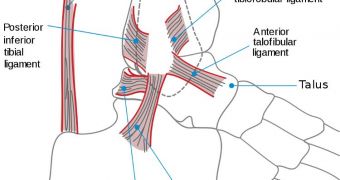A group of investigators led by Pennsylvania State University (Penn State) associate professor of kinesiology Stephen Piazza discovered in their latest study that the skeletal structure of ankles is different in sprinters than in non-sprinters.
Apparently, this practice is responsible for triggering a series of adaptation responses in the human body that ends up modifying even bones. The fact that the body adapts to the activities we put it through is well known, but the extent to which this happens continues to surprise researchers.
The discovery explains why some people can run faster than others. Training and will play an important role in determining who wins a sprint race, but the physical conformation of the runners' bodies is extremely important as well.
Penn State researchers say that the new discovery could be used to develop new methods of assisting people who suffer from difficulties in walking – such as children suffering from conditions including cerebral palsy and seniors who lost mobility in their limbs – in recovering, at least by a small margin.
This is the first time Magnetic Resonance Imaging (MRI) is used to assess the length of sprinters' bones, and relate those measurements with those collected from non-sprinters. The team established that the former indeed have longer forefeet bones than the latter.
At the same time, sprinters also display reduced leverage in their Achilles tendons. Piazza says that reduced leverage is not necessarily a good thing, since it reduces tendon force. However, this works just fine for sprinters, who need rapid muscle contractions in their legs in order to win.
“We made the most direct measurement possible of leverage in the Achilles tendon and found that sprinters’ tendons had shorter lever arms – or reduced leverage for pushing their bodies off of the ground – compared to non-sprinters,” the team leader explains.
One of the most important things sprinters need to be able to do is generate a lot of contact force when they hit the ground. Shorter Achilles tendon lever arms and longer toe bones allow them to do just that, while reducing energy efficiency during normal running and walking.
“Our results may be useful in helping people who have difficulty walking, such as older adults and children with cerebral palsy.” Piazza says.
“If we can better understand how the shapes of bones influence not only muscle leverage but also the ability to move, it may be possible to surgically alter the foot bones of people who lack mobility to help them move better,” he concludes.

 14 DAY TRIAL //
14 DAY TRIAL //